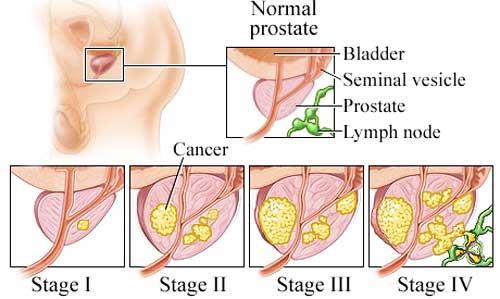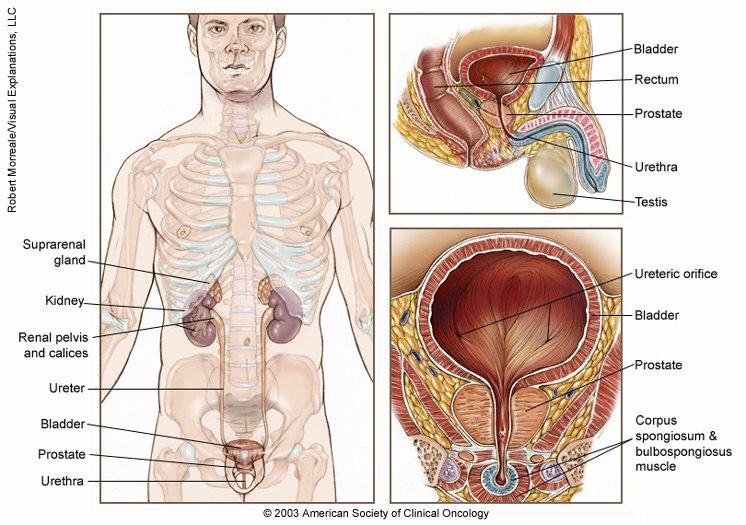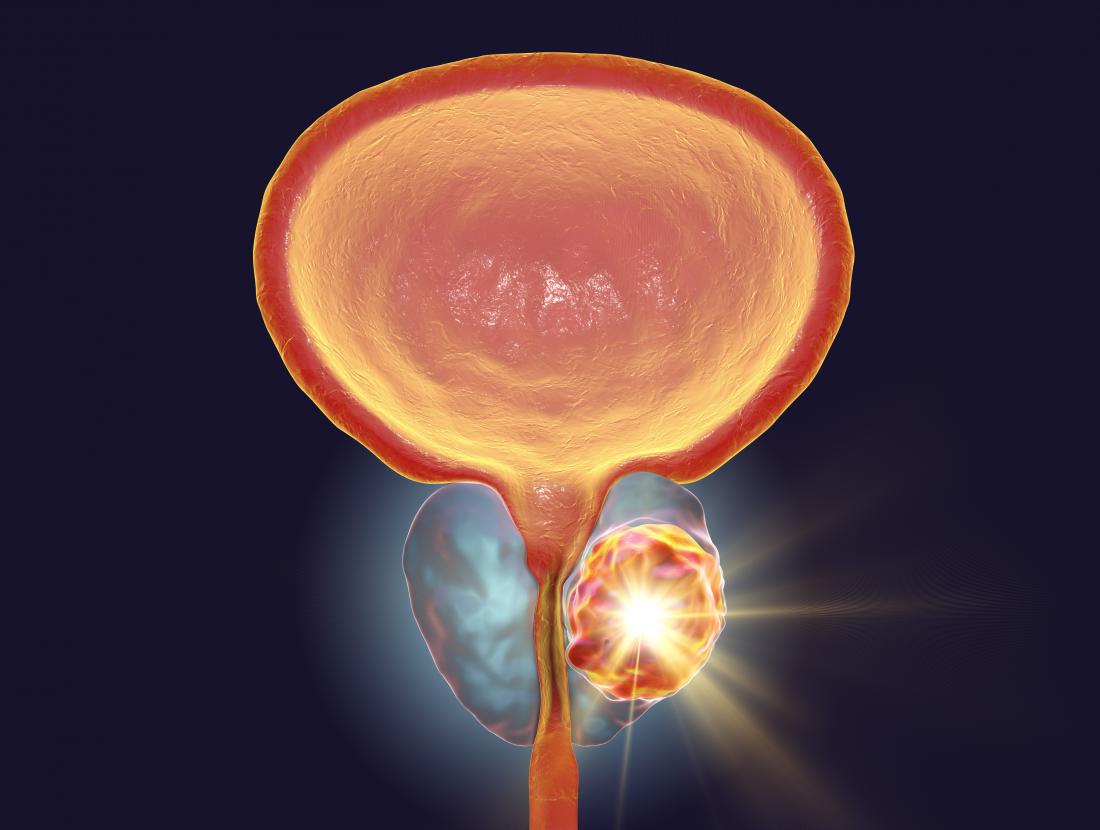How Fast And Where Does Prostate Cancer Spread
Like other cancers, prostate cancer can spread from the site of where it first started to other sites of the body. Once it spreads, the disease may still respond to the treatment, but typically it is now no longer to be cured. Bones, liver, and lungs are the most common sites for prostate cancer metastasis. How do you know that it has spread? And how fast this metastasis?
Since the early detection of the disease is very crucial for the prognosis and outlook of patients , its very important to diagnose the disease as early as possible.
In the U.S, the number of men diagnosed with the disease at later stages decreases drastically due to the implementation of PSA screening test .
Men with many risk factors of prostate cancer should start discussing the test with their doctor earlier. Visit this section for more information about this!
The PSA test is also recommended in other countries . However whether this test is necessary for all men is debatable.
For those who eventually dont have prostate cancer in their life, the choice to take the test may put them at high risk of getting over-diagnosis, making anxiety more likely.
Therefore, some experts agree that the screening prostate cancer test is more recommended for those who have some /many risk factors of the disease. For more advice, consult more with your GP!
How prostate cancer is diagnosed?
PSA screening test
Rectal examinations
Biopsy procedure
IVU or IVP Intravenous urogram
Outlook For Men With Localised Prostate Cancer
Most localised prostate cancer is slow-growing and may not need treatment or shorten a mans life. For many men who have treatment for localised prostate cancer, the treatment will get rid of the cancer. For others, treatment may be less successful and the cancer may come back. If this happens, you might need further treatment.
Quality Of Life With Advanced Stage Prostate Cancer
Since Huggins and Hodges won a Nobel Prize in 1966 for their work describing the relationship between testosterone and prostate cancer, androgen deprivation has continued to be an important component in the treatment of advanced prostate cancer. It is associated, however, with significant cost in terms of morbidity as well as economics. Side effects of androgen deprivation therapy include hot flashes, osteoporosis, loss of libido or impotence, and psychological effects such as depression, memory difficulties, or emotional lability. Recently Harle and colleagues reported insulin resistance, hyperglycemia, metabolic syndrome, and metabolic complications being associated with castration and thus being responsible for increased cardiovascular mortality in this population.
Because of the palliative nature of androgen ablation, quality of life is an important component of evaluating competing therapies. Intermittent androgen deprivation is one approach to hormonal therapy that has been developed with the aim of minimizing the negative effects of therapy while maximizing clinical benefits and the patients quality of life. It can be used in any clinical situation where continuous androgen deprivation treatment could be applied.
Read Also: Does Enlarged Prostate Affect Ejaculation
Where Does Metastatic Bladder Cancer Spread To
Bladder cancer spreads when cancerous cells reproduce and invade surrounding healthy tissues. This is known as metastasis. Usually, metastatic bladder cancer refers to cancer that has spread to distant organs, but metastasis can occur locally in the muscles and connective tissues that are directly adjacent to the bladder as well.
What Is The Prognosis For People Who Have Prostate Cancer

Because prostate cancer tends to grow slowly, most men die from something other than the disease. Early detection is key to better outcomes. Almost all men 97% to 98% diagnosed with localized cancer that hasnt spread outside of the prostate live at least five years after diagnosis. When metastatic cancer has spread outside of the gland, one-third of men continue to survive after five years.
Don’t Miss: Finding The Prostate Externally
Living With Prostate Cancer
As prostate cancer usually progresses very slowly, you can live for decades without symptoms or needing treatment.
Nevertheless, it can affect your life. As well as the possible side effects of treatment, a diagnosis of prostate cancer can understandably make you feel anxious or depressed.
You may find it beneficial to talk about the condition with your family, friends, a GP and other people with prostate cancer.
Financial support is also available if prostate cancer reduces your ability to work.
Does Overdiagnosis Lead To Overtreatment Of Older Men
The widespread use of PSA screening has led to an increase in the diagnosis and treatment of early localized prostate cancer. Data from the US Cancer of the Prostate Strategic Urological Research Endeavor database suggest a significant decrease in risk in the last 2 decades in the United States, with more patients being identified with low-risk disease at diagnosis, but the role of active treatment of low- and intermediate-risk disease in elderly men remains controversial.
The median time from diagnosis to death from prostate cancer for men with nonpalpable disease is approximately 17 years., Considering that the US male life expectancy at the age of 65 years is 16 years, aggressive therapy will hardly extend life expectancy of older men with no palpable prostate cancer at the time of diagnosis. Twenty to 30% of prostate cancers detected by PSA screening programs show Gleason scores of 6 or lower and, thus, are not poorly differentiated and have volumes smaller than 0.5 cm3.
Histologic evaluation of radical prostatectomy specimens demonstrated that about 20% to 30% of cancers are small volume, show low Gleason scores, and are consequently clinically harmless., Many of these cancers pose little threat to life, especially for older men. Has PSA screening resulted in prostate cancer overdiagnosis?
You May Like: Super Beta Prostate Advanced Side Effects
Checking For Psa At Home
Itâs best to look for prostate symptoms and then screen using a Prostate Specific Antigen blood test. While there is no physical way for you to check for prostate cancer at home, there are at-home screening options for PSA. imaware⢠at-home test for PSA can help screen you for prostate issues.
Also Check: New Jersey Prostate Cancer Center
Are Older Men Undertreated
Schwartz and colleagues reviewed the treatment decisions and factors influencing them in a cohort of men with localized prostate cancer. Age, comorbidity, and Gleason score were found to be independent predictors of suboptimal treatment. It was concluded that most men older than 70 years with moderately or poorly differentiated tumors and no to mild comorbidity were given suboptimal treatment. Most of these men were undertreated, receiving watchful waiting therapy when potentially curative therapy could have been applied. With optimal treatment, clinical outcomes could have been improved.
Thompson and colleagues investigated otherwise healthy octogenarians diagnosed with prostate cancer who underwent radical prostatectomy. At the last follow-up visit, 10 patients had survived more than a decade after surgery, and 3 patients had died within 10 years of surgery. The remaining 6 patients were alive at less than 10 years of follow-up. Seventy-four percent of patients were continent. No patient had died of prostate cancer, and the 10-year, all-cause survival rate was similar to that observed in healthy patients 60 to 79 years old undergoing radical prostatectomy. These findings indicate that careful selection of patients even older than 80 years can achieve satisfactory oncologic and functional outcomes after surgery. It is important to note, however, that the rate of urinary incontinence after surgery exceeds that of younger counterparts.
Don’t Miss: How To Shrink Prostate Mayo Clinic Naturally
What Is The Most Effective Treatment For Prostate Cancer
The choice of treatment for prostate cancer depends on many factors such as the patients prostate cancer risk as calculated from prostate-specific antigen levels, Gleason score, and tumor staging. Patients can discuss the significance of these factors in the choice of treatment with their doctor.
The standard effective treatment choices for men with early-stage prostate cancer are as follows
- Active surveillance: Monitoring the progression/status of the low-risk or early-stage cancer with regular testing and not treating it right away.
- Prostatectomy: Surgical removal of the prostate.
- Radiation therapy: Use of high-energy waves to destroy cancer cells.
Radiation therapy is one of the most effective treatments for many men with early-stage prostate cancer. It is also the best prostate cancer therapy for older men or those with other co-existing diseases. It can be delivered to the patient in any of the two ways
- External beam radiation: Sending/focusing high-energy waves from an external machine into the tumor.
- Brachytherapy: Placing a radioactive dye in the tumor through an implant or hollow tubes.
For metastatic prostate cancer, androgen deprivation therapy is usually the choice of treatment. ADT is also the only option in patients with prostate cancer who are unfit or unwilling to undergo surgery or/and radiation therapy.
What About Other Treatments I Hear About
When you have cancer you might hear about other ways to treat the cancer or treat your symptoms. These may not always be standard medical treatments. These treatments may be vitamins, herbs, special diets, and other things. You may wonder about these treatments.
Some of these are known to help, but many have not been tested. Some have been shown not to help. A few have even been found to be harmful. Talk to your doctor about anything youre thinking about using, whether its a vitamin, a diet, or anything else.
You May Like: Can Zytiga Cure Prostate Cancer
Screening For Prostate Cancer
There are no tests available with sufficient accuracy to screen populations of men for early signs of prostate cancer. However, early detection and treatment can significantly improve prostate cancer survival.
The test most commonly used to aid early detection of prostate cancer is the prostate specific antigen blood test. This is not a diagnostic test as it can only indicate changes in the prostate. If you are concerned about prostate cancer you should talk to your doctor and make an informed choice about whether to have one of the tests designed to find early signs of prostate cancer, in view of the potential risks and benefits.
There are no proven measures to prevent prostate cancer.
If You Dont Have Treatment Straight Away

Your doctors monitor your cancer closely if it is unlikely to grow or develop for many years. If it starts to grow, you have treatment. This is called active surveillance. You have active surveillance if you have either:
- low risk localised prostate cancer and surgery or radiotherapy are suitable treatments for you
- intermediate risk localised prostate cancer if you dont want treatment straight away
Another way to monitor prostate cancer is called watchful waiting. You have fewer tests than with active surveillance. You have watchful waiting if the doctor aims to control your cancer and:
- you don’t have any prostate cancer symptoms and you’re not suitable for treatments that aim to cure, such as radiotherapy or surgery
- you dont want active surveillance
You might also have cryotherapy or high frequency ultrasound therapy as part of a clinical trial.
Radiotherapy and surgery work equally well at curing prostate cancer but they have different side effects. Your doctor can explain these to you.
You May Like: Female Prostate Equivalent
Treatments To Control And Prevent Symptoms Caused By The Spread Of Prostate Cancer To The Bones
Palliative External beam radiotherapy
Radiopharmaceuticals: Strontium-89 , samarium-153
Radium-223 dichloride is now licensed and called Xofigo. This is not widely available in the UK but BPC is one of a relatively small number of specialist centres using this treatment.
Zolidronic acid a bisphosphonate given by a 15 minute intravenous infusion every 34 weeks. It reduces the risk of bone complications, including pain and fractures.
Xgeva : this is a newly licensed drug available at BPC.
Pain medications
Surgery may be undertaken to treat bone fractures or to relief the pressure on the spinal cord by bone metastases.
Prostate Cancer Symptoms Early Advanced And Recurrent Signs
As referenced before, the prostate malignancy will, for the most part, give practically zero indications explicitly during the beginning period. The manifestations may change for every person. It is imperative to understand that a significant number of symptoms can also be present because of other underlying diseases. You can schedule a screening test, which is often through a rectal examination to look for the prospects of an abnormality if there is any.
Read Also: Side Effects Of Chemotherapy For Prostate Cancer
Symptoms Of Advanced Prostate Cancer
If you are worried about prostate cancer, we have more information about the signs and symptoms.
Symptoms of prostate cancer may not develop for many years. The symptoms of advanced prostate cancer may be caused by an enlarged prostate. Or symptoms may be a sign of secondary cancer, where the cancer has spread to another part of the body.
See also
Stem Cell Or Bone Marrow Transplant
A stem cell transplant, sometimes called bone marrow transplant, replaces damaged blood-forming cells with healthy ones. The procedure takes place following large-dose chemotherapy or radiation therapy to kill cancer cells and to stop your stem cells from producing cancerous cells.
Stem cell transplants can be used for several types of cancer, including multiple myeloma and some kinds of leukemia.
Read Also: Chemo Pill For Prostate Cancer
How To Spot Prostate Cancer Early
There are two types of screening that your doctor may recommend: the first requires blood collection to measure the level of the prostate-specific antigen PSA. Higher levels often indicate the presence of prostate cancer.
The second test is a physical examination in which a doctor puts on gloves, lubricates the finger and inserts it into the rectum to see if the prostate is enlarged. If any of the results indicate the possibility of prostate cancer, your doctor will recommend further tests.
“Early-stage prostate cancer typically does not have any physical signs or symptoms,” said Dr. Salim Cheriyan, a urologist with Baylor St. Luke’s Medical Group. “This is why discussing the risks and benefits of screening with your physician is an important part of detecting prostate cancer.”
Stage Iv Prostate Cancer Prognosis
Prostate cancers detected at the distant stage have an average five-year survival rate of 28 percent, which is much lower than local and regional cancers of the prostate. This average survival rate represents stage IV prostate cancers that have metastasized beyond nearby areas to lymph nodes, organs or bones in other parts of the body.
How We Treat Prostate Cancer
The prognosis for metastatic prostate cancer can be discouraging, but some treatment centerslike the Johns Hopkins Precision Medicine Center of Excellence for Prostate Cancerspecialize in innovative, individualized therapy with the potential to improve outcomes.
Also Check: Does Enlarged Prostate Affect Ejaculation
Is Prostate Cancer Curable
Prostate cancer is the most common type of cancer among men, second only to skin cancer. Learning that one has any type of cancer isnt easy, but the first question on most patients minds after diagnosis is, is prostate cancer curable?
The short answer is yes, prostate cancer can be cured, when detected and treated early. The vast majority of prostate cancer cases are discovered in the early stages, making the tumors more likely to respond to treatment. Treatment doesnt always have to mean surgery or chemotherapy, either. Non-invasive radiation therapy can effectively treat prostate cancer in the case of Pasadena CyberKnife, radiosurgery treatment generally takes less than a week, and you can typically resume your normal activities the same day you receive treatment.
Untreated Prostate Cancer No Death Sentence

By Frederik Joelving, Reuters Health
4 Min Read
NEW YORK â Even without treatment, only a small minority of men diagnosed with early-stage prostate cancer die from the disease, Swedish researchers reported Friday.
Drawing from a national cancer register, they estimated that after 10 years prostate cancer would have killed less than three percent of these men.
What the data is showing is that for most patients with low-risk cancer, there is no need to panic, said Grace Lu-Yao, a cancer researcher who was not involved in the new study. Prostate cancer really is no longer a fatal disease.
With modern screening tests, said Lu-Yao, of the University of Medicine and Dentistry of New Jersey in New Brunswick, many prostate cancers are found that might never have developed into serious disease. In such cases, the slight reduction of risk by surgically removing the prostate or treating it with radiation may not outweigh the substantial side effects of these treatments.
In the Swedish study, published in the Journal of the National Cancer Institute, researchers compared deaths among more than 6,800 men with prostate cancer who underwent treatment â surgery or radiation â or were simply monitored regularly by their doctors, the so-called watchful waiting approach. With watchful waiting, patients are only treated if their cancer progresses.
The Swedish findings jibe with earlier results, including a large US study.
Recommended Reading: Prostate Cancer Ruined My Marriage
Recommended Reading: Prostate Fiducial Marker Placement
What Are Male Sex Hormones
Hormones are substances that are made by glands in the body. Hormones circulate in the bloodstream and control the actions of certain cells or organs.
Androgens are a class of hormones that control the development and maintenance of male characteristics. The most abundant androgens in men are testosterone and dihydrotestosterone .
Androgens are required for normal growth and function of the prostate, a gland in the male reproductive system that helps make semen. Androgens are also necessary for prostate cancers to grow. Androgens promote the growth of both normal and cancerous prostate cells by binding to and activating the androgen receptor, a protein that is expressed in prostate cells . Once activated, the androgen receptor stimulates the expression of specific genes that cause prostate cells to grow .
Almost all testosterone is produced in the testicles a small amount is produced by the adrenal glands. Although prostate cells do not normally make testosterone, some prostate cancer cells acquire the ability to do so .
